
This web site contains photos of the following.Birds,arizona birds,wild birds of arizona,Hummingbirds, Arizona desert life,flowers plants,trees,cactus,blooms,cicada,locust,frogs,tortoise,snakes,moths, butterflies,wolf,lizard,peccary,javelina,coyote,dinosaur insects,fox,grasshopper,hawks,larks,sparrow,warblers,jays,tanager,wrens,robins,grosbeak,hummingbirds,woodpeckers,verdins,phainopepla,blackbird, bunting,ducks,finch,doves,flycatchers,gnatcatchers,kinglet,oriole,owl,pyrrhuloxia,quail,rail,sniperoadrunner,thrasher,thrush,titmouse,towhee,trogon,vireo,vultures and much more,museum,water,aeizona desert,deserts,mountains,
birdfotos.com

HUTTON'S VIREO
I studied the nest for about an hour in order to determined the time period between feedings. This would tell me how much time I would have to get my camera equipment in place with out the parent birds seeing me do it. This was mid after noon, and the feedings were running 25 to 35 minutes a part. As soon as the parent bird left the nest I made a Bee line for my car. Down the hill I ran, got as much equipment as I could and scurried back up the hill. You see the nest was quite a ways up the hill from the cabin. One more trip as fast as I could go. The old ticker was really pumping by now. Just as I got my last piece of photo equipment to the nest area the parent bird showed up to feed the chicks. I really needed that few minutes rest, I was breathing like a steam engine going up a mountain by that time. After about 5 to 10 minutes Mom, or Pop, as the case may be, left the nest to get more bugs. I quickly set up four cameras and two mirrors. Two of the cameras were Nikon F4's and two were Nikon digital cameras. I'll let you figure out which images were taken with which camera. Over half of the images used here were taken with the digital camera. At the end of the page I will say which were digital images.
I also used a radio controlled shutter devise because the cameras had to be close to the tree the nest was in, and if I was to stand by the cameras, the parent birds might not have returned to feed their young. I stood about 50 feet away behind another tree using my binoculars to view the nest.
So, let's see the photos!
*************************************

No. 1 image.
It was a hot muggy cloudless part of the day, no breeze, just the sun beating down on every thing. Photo was taken about noon or a little after. I believe in this image the parent bird was trying to shade its young. The nest was 50 inches above the ground.
*********************************
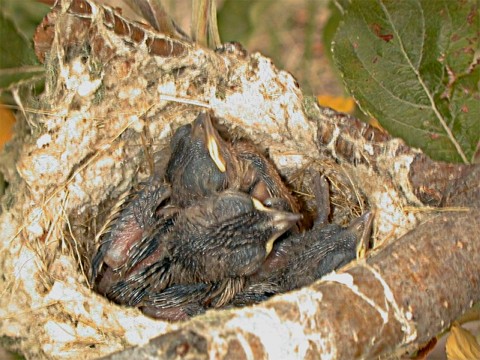
No. 2 image.
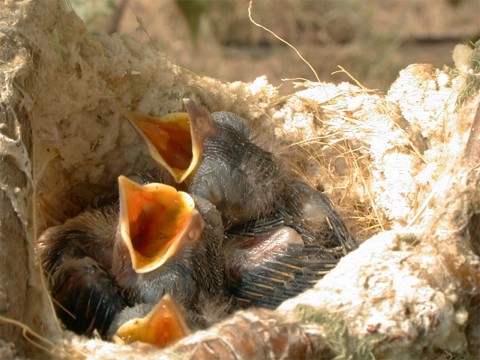
No. 3 image.
Using the mirror I had set up, I could look into the nest cavity. One nice thing about a mirror, you can zoom in on the object,s reflection in the mirror. You can also use a flash in this type of a set up. The mirror will direct the light of the flash directly on to the subject.
************************************
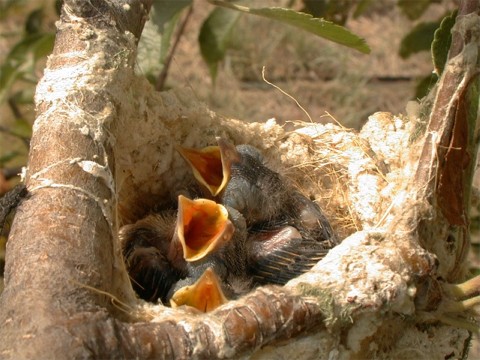
No. 4 image.
This is just to show that zooming in & out on the subject is possible through a mirror reflected image.
*************************************
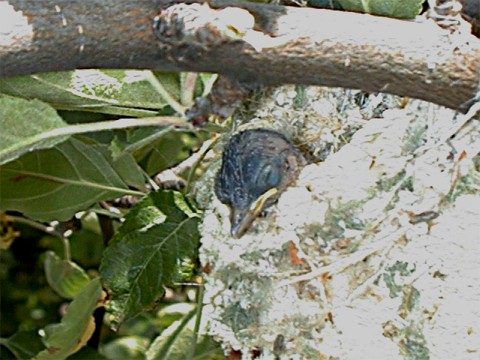
No. 5 image.
It was very tired out that day.
***********************************
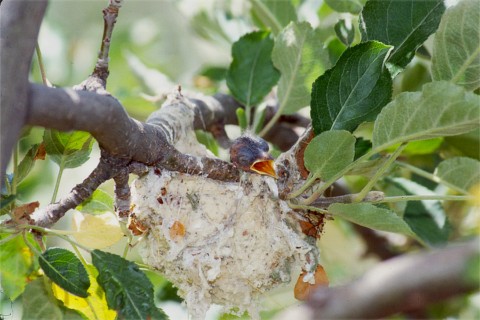
No. 6 image.
As you can see in this photo the chick doesn't look as if it has eyes open. It looks as if the chick is saying, "hey is there any one out there, I'm hungry".
*********************************
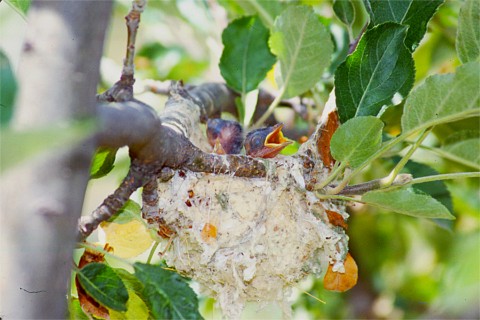
No. 7 image.
They must have heard some thing to cause them to start stirring around in the nest.
*****************************************
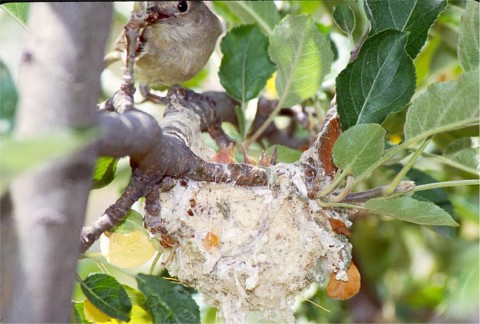
No. 8 image.
Now that's more like it. This is what we have been waiting for.
****************************************
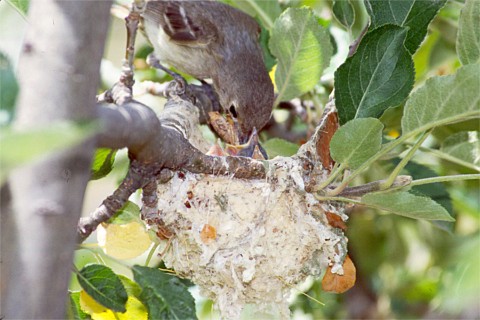
No. 9 image.
Down the old gullet the winged bug goes. You see, it is the noisiest wheel that gets the grease.
**************************************

No. 10 image.
Gee, is that all I get, that wasn't a very big bug mom, don't you have another one for me.
**********************************

No. 11 image.
Remember I said it was a hot, muggy, breezeless day and the sun was beating down severely. The two parent birds coming to the nest each took turns shading the chicks.
**********************************************

No. 12 image.
Trying to provide shad for the chicks.
*************************************
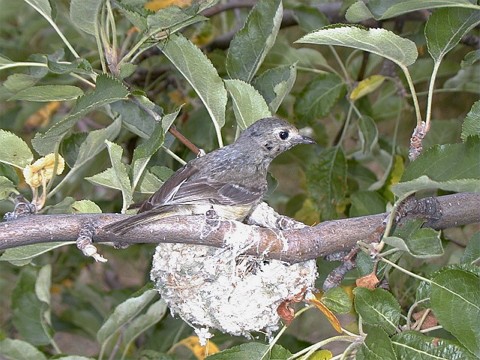
No. 13 image.
***********************************
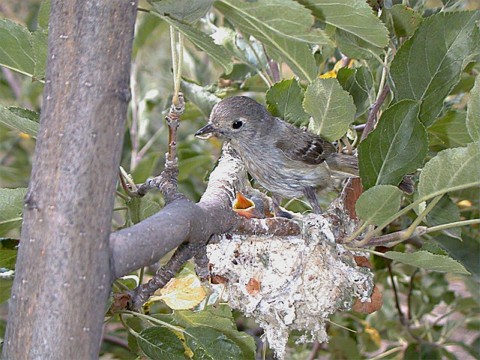
No. 14 image.
I sincerely hope you have enjoyed looking at these few images of this Hutton's Vireo.
Dig cam images were, #1, #2, #3, #4, #5, #10, #11, & #12.
Back to Millers first page. Back to the bird links page.
Cheers, from Tom Beatty Sr.
Huachuca's Miller Canyon of Southeast Arizona
"The Hummingbird Place" with 3 Hummingbird Viewing Sites: